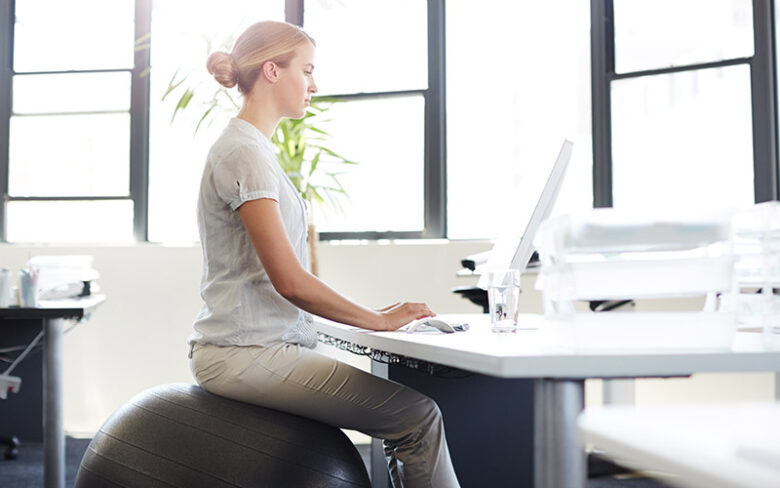Today’s fast-paced, digitally connected world forces more and more people to be confined to their workstations. Whether at home or in the office, the sedentary lifestyle of digital workers can lead to poor posture, back pain, a slowed metabolism, and stress. We are more productive than ever, but this can also harm our health. This growing concern has led to a surge in the popularity of desk fitness programs, which encourage people to incorporate regular, basic exercise into their daily routines. Maintaining your desk fitness doesn’t require an elaborate gym routine; it just requires smart, regular adjustments. This article offers some innovative, practical, and research-backed desk fitness tips for digital workers. Let’s explore how you can improve your health and productivity.
Understanding the Risks of Sedentary Desks
Digital workers spend 8–10 hours a day in front of screens. Research in the Journal of the American Medical Association links prolonged sitting to cardiovascular disease, obesity, and premature death. Sitting for long periods can also affect digestion, circulation, and musculoskeletal health. Limited mobility can also lead to fatigue, difficulty concentrating, and anxiety, which are also concerning. Understanding these risks is the first step in recognizing the urgent need for regular exercise and positive habits, even when working at a desk.
Simple Seated Stretching Techniques
Regular stretching can improve circulation and relieve tension in the neck, shoulders, and lower back. Neck rotations, shoulder shrugs, and spinal twists can be performed at your desk without moving your body. For best results, repeat these exercises several times a day to improve your posture and relieve stiffness. Hourly shoulder rotations can help prevent unconscious slumping caused by prolonged screen time.
Muscle Activation Exercises for Your Desk
Build muscle and burn calories at work without a gym membership. Do isometric exercises while seated, such as glute squeezes and core contractions. Try seated leg raises, push-ups from your desk, or standing bodyweight squats. These mini-exercises require no equipment and can be done during breaks or free time. They can reduce the harmful effects of prolonged sitting and clear your mind, improving your focus and productivity.
Posture and Ergonomics Are Crucial
Long-term musculoskeletal health depends on your posture and the configuration of your desk. An ergonomic workstation can prevent carpal tunnel syndrome, lower back pain, and eye strain. Keep your monitor at eye level, your feet flat on the floor, and your elbows at a 90-degree angle. Choose a supportive chair that promotes an upright posture. Standing workstations or convertible desks allow employees to alternate between sitting and standing. An ergonomic desk is crucial for your long-term physical health.
Snacks for Your Desk Fitness
Your desk workout should include adequate nutrition and hydration. Drinking water daily increases energy, boosts metabolism, and reduces headaches and fatigue. Refillable water bottles help you stay hydrated. Instead of opting for sugary or processed foods, stock your desk with nuts, fruit, or yogurt to maintain long-lasting energy and prevent afternoon slumps. A balanced diet is the silent companion of your desk fitness routine and helps you perform optimally both emotionally and physically.
Mental Health
At work, mental health is just as important as physical well-being. Digital work often comes with high workloads, screen fatigue, and digital noise. Deep breathing, mindfulness meditation, and short mental breaks can help. Limiting work time, reducing reminders, and keeping a gratitude journal can help maintain emotional balance. These small habits can significantly lower cortisol levels, increase mental resilience, and make you more productive and less susceptible to burnout.
Maintain a Regular Routine with Mini Habits
Working out at your desk can be challenging. The goal is to develop mini habits: small, achievable, daily activities. For example, setting a timer to get up every hour, stretching for five minutes in the morning, or taking a walk while on the phone can all lead to lasting improvements. These mini-habits can contribute to a healthier, more active work lifestyle. The goal is to gradually integrate movement and mindfulness into your work.
The Role of Technology in Supporting Desk Fitness
Screen time can contribute to sedentary behavior, but technology can help. Fitness monitors, productivity apps, and guided workouts can help you stay active. Wearables can track steps and posture, while apps like “Stretchly” and “Stand Up!” remind you to move. Employers offer numerous virtual wellness programs to promote well-being in the workplace. When used correctly, technology can improve your fitness at your desk.
Sustainable Desk Fitness for Remote and Hybrid Workers
Remote and hybrid workers face several challenges when it comes to fitness in their workplace. Working from home can either enhance or hinder fitness goals, depending on the office environment. It’s crucial to create a workspace, schedule walking breaks, and set start and end times to mimic an office routine. Without the natural cues of the office, remote workers need to pay more attention to mobility and structure. Develop an easy-to-follow routine that fits your lifestyle for sustainability.
Conclusion
The modern workplace demands long hours of screen time, but our health shouldn’t suffer. Desk fitness exercises like stretching, moderate exercise, ergonomic design, a healthy diet, and mental well-being can significantly improve your quality of life. It’s not about making time for fitness; it’s about integrating it into your work. Small, consistent steps can improve your health, productivity, and job satisfaction. We’re increasingly sedentary, so it’s crucial to move more. Desk fitness isn’t just a trend; it’s about promoting healthier work habits in the digital age.
FAQs
1. What quick exercises can I do at my desk?
Seated leg raises, shoulder shrugs, cervical rotations, core compressions, and chair squats are all good options. These short, unobtrusive exercises don’t require any equipment.
2. How often should I move at work?
It’s recommended to take a break every 30-60 minutes. Even a few minutes of standing or walking around can help.
3. Are standing desks good for your health?
Standing workstations can reduce back pain, improve your posture, and burn more calories every day. Alternating between sitting and standing is best.
4. What can I eat to stay energized at my desk?
Choose nuts, yogurt, fruit, or whole grains for protein and fiber. Avoid sugary products that can cause an energy dip.
5. How does desk fitness affect your productivity?
Regular exercise can improve circulation, brain function, and mood, leading to greater focus, creativity, and productivity.




